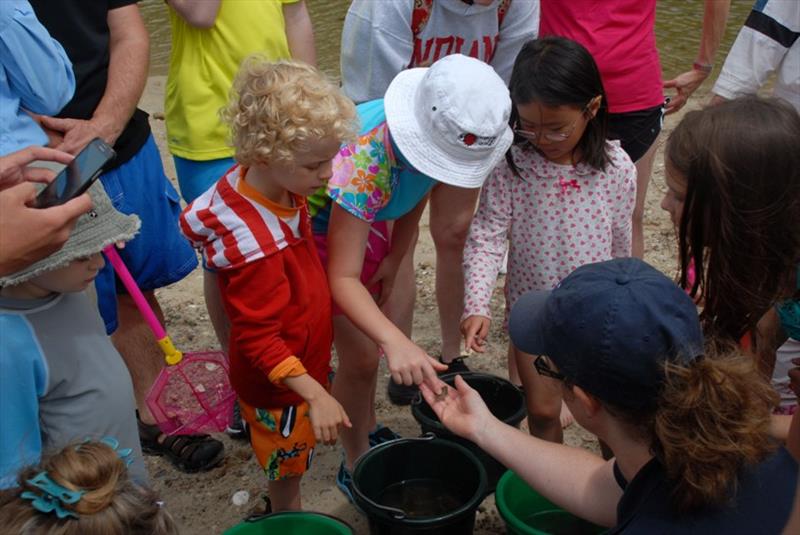
Woods Hole Science Aquarium announces summer programs for high school students
by NOAA Fisheries 19 Jan 2018 18:39 UTC

Participants in a collecting trip see what they have found at a nearby beach © NOAA Fisheries / Woods Hole Science Aquarium
The Woods Hole Science Aquarium (WHSA) is offering two summer programs for high school students in 2018, a five-week internship and a two-week seminar devoted to careers in marine science. Both programs are designed for students who are interested in marine science and marine animals, aquarium operations, and marine education and conservation.
Interns in the five-week program will spend approximately 20-25 hours per week in the aquarium helping to care for animals. The interns will learn about marine animal husbandry, aquarium operations, conservation, and public education. They will also serve as assistant naturalists for shore-side collecting walks for the public. Interns are expected to help with cleaning tanks, preparing fish food, and other animal husbandry chores that can be messy and smelly.
The high school student interns will also visit other Woods Hole research institutions and will get an introduction to careers in marine and environmental science. The five-week program will run from July 2 through August 3. The Careers in Marine Science seminar will run from July 23 through August 3.
The seminar is designed to give students an idea of what people working in Woods Hole science institutions do, and how different disciplines contribute to the larger effort to understand the marine world and to manage marine resources wisely.
Seminar participants will be introduced to animal husbandry and basic aquarist skills, hear presentations from scientists working in a variety of marine fields, go on a collecting trip, and visit other Woods Hole science institutions and another aquarium.
To participate in either the internship or the seminar, students must have completed 10th, 11th or 12th grade and must be at least 16 years old by July 2, 2018. Applicants must have U.S. citizenship. Application forms are available online. Applicants must also provide a transcript and two references. E-mail applications are welcome. All application materials must be postmarked by March 23 or be e-mailed by March 30. The 2018 interns and seminar participants will be announced on April 13.
The Woods Hole Science Aquarium holds approximately 95 species of marine animals in several dozen tanks that provide cold water, temperate water, and tropical water habitats. In a typical summer the aquarium hosts more than 50,000 visitors from all 50 states and more than 50 countries.
The summer programs are run by the staff of the Woods Hole Science Aquarium and are a project of NOAA's National Marine Fisheries Service in partnership with the Marine Biological Laboratory.
The aquarium welcomes applications from students of all backgrounds. Students from groups currently under-represented in marine sciences are especially encouraged to apply – this includes African American, Cape Verdean, Hispanic, and Native American students.
Questions about the program may be directed to Kristy Owen, NOAA Fisheries, 166 Water Street, Woods Hole, MA 02543, (508) 495-2098, or kristy.owen@noaa.gov.